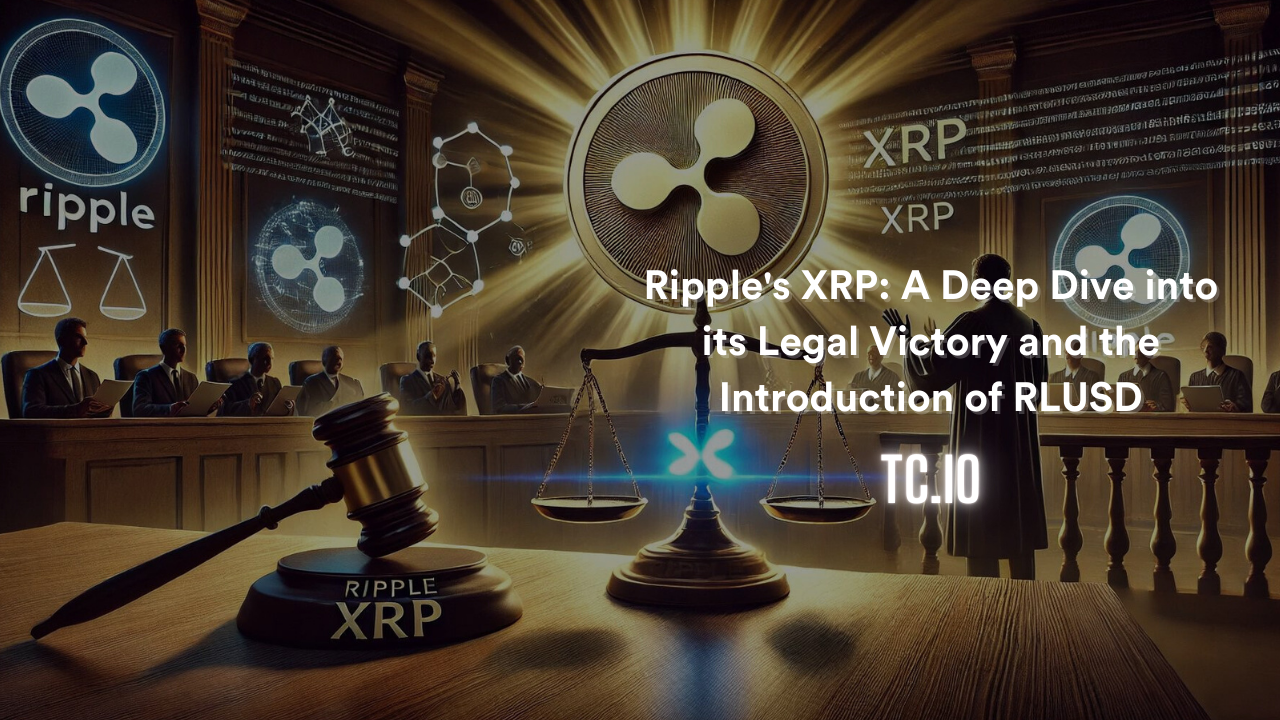
Ripple Labs has long been at the forefront of the digital asset space, with XRP being one of the most recognized and utilized cryptocurrencies in the industry. Over the years, XRP has faced numerous challenges, most notably from the U.S. Securities and Exchange Commission (SEC). However, a recent legal victory has reignited interest in XRP, solidifying its position in the market. Alongside this, Ripple has introduced RLUSD, a stablecoin that aims to further enhance the utility and reach of the Ripple network. This article delves into the intricacies of XRP, the implications of Ripple’s court victory, and the potential impact of RLUSD on the broader financial ecosystem.
Understanding Ripple and XRP
Ripple is a technology company that focuses on building financial solutions to facilitate cross-border payments. Unlike many other cryptocurrencies, XRP was created with a specific use case in mind: to act as a bridge currency for financial institutions to facilitate fast and cost-effective international payments. XRP operates on the RippleNet network, which is designed to enable real-time gross settlement, currency exchange, and remittance.
XRP is unique in that it is not mined like Bitcoin or Ethereum. Instead, all 100 billion XRP tokens were pre-mined at the time of its creation, with a portion of the tokens gradually released into the market by Ripple Labs. This approach has led to some controversy, particularly around the centralization of XRP and Ripple’s control over a significant portion of the token supply.
The SEC Lawsuit and Ripple’s Legal Battle
In December 2020, the SEC filed a lawsuit against Ripple Labs, alleging that the company had conducted an unregistered securities offering by selling XRP. The SEC’s argument was based on the claim that XRP should be classified as a security, much like a stock or bond, rather than a currency or commodity.
The lawsuit sent shockwaves through the cryptocurrency industry, leading to widespread delistings of XRP from major exchanges and a significant drop in its market value. Ripple, however, maintained that XRP is not a security and that the SEC’s lawsuit was based on a flawed understanding of the cryptocurrency market.
Over the course of the legal battle, Ripple’s defense team argued that XRP should be classified as a digital currency, similar to Bitcoin or Ethereum, which the SEC had previously stated were not securities. Ripple also highlighted the lack of clear regulatory guidance from the SEC regarding the classification of digital assets.
Ripple’s Legal Victory
In July 2023, Ripple scored a significant legal victory when a U.S. District Judge ruled that XRP is not inherently a security. The judge’s ruling differentiated between XRP sales to institutional investors, which could be considered securities transactions, and sales to retail investors, which were deemed not to be securities transactions.
This partial victory was a landmark moment for Ripple and the broader cryptocurrency industry. The ruling provided much-needed clarity on the legal status of XRP and set a precedent that could influence future regulatory actions against other cryptocurrencies.
Following the ruling, XRP’s market value surged, and several exchanges that had delisted XRP began relisting the token. The ruling also bolstered Ripple’s position as a leader in the digital asset space, with many industry observers viewing the outcome as a significant step toward clearer regulatory guidelines for cryptocurrencies.
The Introduction of RLUSD
Amidst the legal battle, Ripple has continued to innovate and expand its offerings. One of the most recent developments is the introduction of RLUSD, a stablecoin pegged to the U.S. dollar. Stablecoins are digital currencies that are designed to maintain a stable value relative to a fiat currency, such as the U.S. dollar. RLUSD is intended to serve as a reliable medium of exchange on the RippleNet network, providing users with the benefits of digital currencies while minimizing the volatility associated with traditional cryptocurrencies like XRP.
Why RLUSD Matters
RLUSD has the potential to play a crucial role in the Ripple ecosystem for several reasons:
- Stability: Unlike XRP, whose value can fluctuate significantly, RLUSD is designed to maintain a 1:1 peg with the U.S. dollar. This stability makes it an attractive option for users who need to transfer value across borders without worrying about price volatility.
- Enhanced Utility: By introducing RLUSD, Ripple aims to provide users with more options for transferring value on the RippleNet network. This could further increase the adoption of Ripple’s technology among financial institutions and businesses.
- Regulatory Compliance: The introduction of a stablecoin like RLUSD could also help Ripple navigate the complex regulatory landscape. By offering a stable digital currency that is closely tied to a fiat currency, Ripple may be able to reduce the risk of future legal challenges related to the classification of its digital assets.
The Future of XRP and RLUSD
Ripple’s legal victory against the SEC marks a pivotal moment in the history of XRP and the broader cryptocurrency market. While the ruling has provided much-needed clarity, the legal landscape for digital assets remains uncertain, and Ripple may continue to face challenges as it seeks to expand its reach.
At the same time, the introduction of RLUSD represents a significant step forward for Ripple’s ecosystem. By offering a stable, dollar-pegged digital currency, Ripple is positioning itself to meet the needs of a broader range of users, from financial institutions to everyday consumers.
As the digital asset space continues to evolve, XRP and RLUSD will likely play key roles in shaping the future of cross-border payments and digital finance. Ripple’s ongoing efforts to innovate and navigate the regulatory landscape will be critical in determining the long-term success of these digital assets.
Conclusion
Ripple’s journey has been marked by both innovation and legal challenges, but the company’s recent legal victory and the introduction of RLUSD have solidified its position as a leader in the digital asset space. As Ripple continues to develop its technology and expand its offerings, XRP and RLUSD are poised to play significant roles in the future of finance. Investors, businesses, and regulators alike will be closely watching Ripple’s next moves as the company continues to push the boundaries of what is possible in the world of digital finance.




